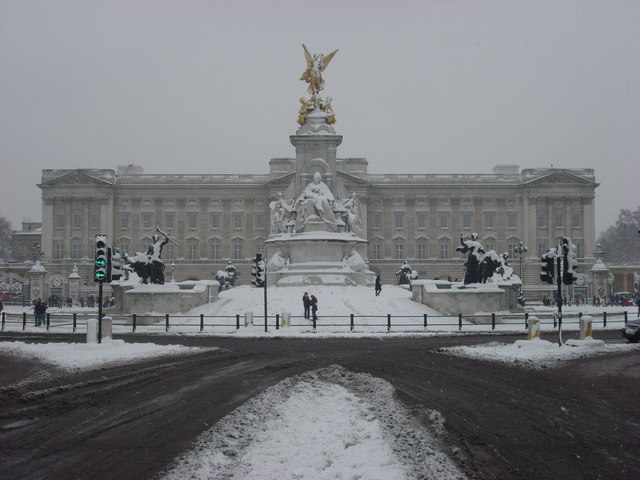
It was during the reign of Queen Victoria that many interpretations of modern Christmas traditions took hold. The Royal Family was at the heart of some of them with Victoria and her husband, Prince Albert, seen to popularise the Christmas tree. Prince Albert was an enthusiastic skater. And the romance of a snow draped festive season was integral to Victoria’s Christmas season.
By the reign of Queen Victoria, ‘artificial snow’ was even included in the decoration of the Queen’s trees at Windsor, probably to trim the fir branches to make them seem snow-covered as they would have appeared in Prince Albert’s native Coburg.
Significantly, the royal children performed a tableau at Windsor Castle to mark the ‘Four Seasons’ on the 14th wedding anniversary of Queen Victoria and Prince Albert in 1854. The Prince of Wales was dressed as the part of ‘Winter’, perhaps because he had been sculpted in this allegory by Mary Thornycroft in 1847, with the four eldest royal children as one of each of the seasons, a group eventually shown in the Great Exhibition of 1851. For the tableau, the Prince of Wales wore a cloak covered in make-believe snow, a long white beard, wig and fur lined boots.
Prince Albert helped the royal children build snowmen at Windsor, which were apparently at least “twice as tall as himself” (Christopher Hibbert, Queen Victoria, a Personal History, Pg 158).
Queen Victoria and Prince Albert spent the Christmas of 1841-2 at Windsor, driving over to Claremont, the Surrey residence close to Esher which had been the home of her uncle, Leopold I, King of the Belgians and where his first wife, the Prince Regent’s daughter, Princess Charlotte, had died following childbirth in 1817. In January 1842, the Queen noted that a large snowman had been built, with the help of the gardener at Claremont and five other men. She further described that it was at least twelve feet high and that it was in fact, the first snowman she had ever seen. (Cooling, 120). The Queen’s journal describes Prince Albert making a snowman during March snowfall at Osborne in 1847, with Edward of Weimar.
In January 1854, the Queen’s records in her journal that the Royal Family made a snowman together, at Windsor. Snowmen were built again at Osborne in March 1858, and in December 1859, the latter when the Royal Family were on this occasion, at Osborne, and a snowman was made by Prince Albert, the Prince of Wales and other gentlemen.
A charming pencil and watercolour survives in the Royal Collection, made by the artist Ella Taylor, who incidentally, sketched Queen Victoria’s second daughter, Princess Alice and her children at Darmstadt, including two delightful pencil studies of her youngest daughters, Princess Alix and Princess Marie ‘May’ of Hesse. Ella Taylor depicted Queen Victoria’s cousin, Princess Mary Adelaide of Cambridge (1833-97) and John du Plat making a snowman on New Year’s Day 1861. (Ibid, 120). Poignantly, when this watercolour was made, the Christmases enjoyed by the Royal Family with Prince Albert were already at an end, had the Queen but known it; the Prince Consort spent his last Christmas at Windsor with the Royal Family in 1860. He died at Windsor Castle on 14 December 1861.
One of Queen Victoria’s collie dogs was called ‘Snowball’, whom she acquired in 1887 and who was painted on at least two occasions, once with two of her other dogs, her Spitz Marco and Mittel Spitz Janey, with what is possibly Windsor Park in the background. Her youngest son, Prince Leopold, Duke of Albany, owned a pet cat named ‘Snowdrop’.
The traditional snowy Christmas, beloved by so many, was enjoyed, too, by Queen Victoria.

